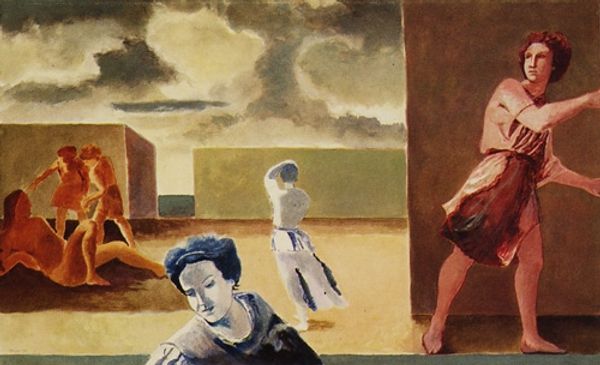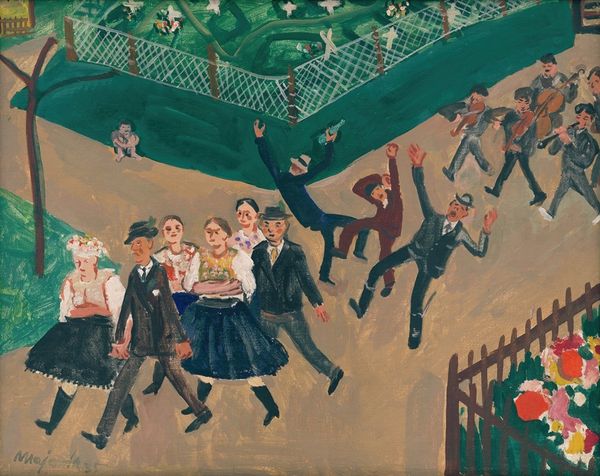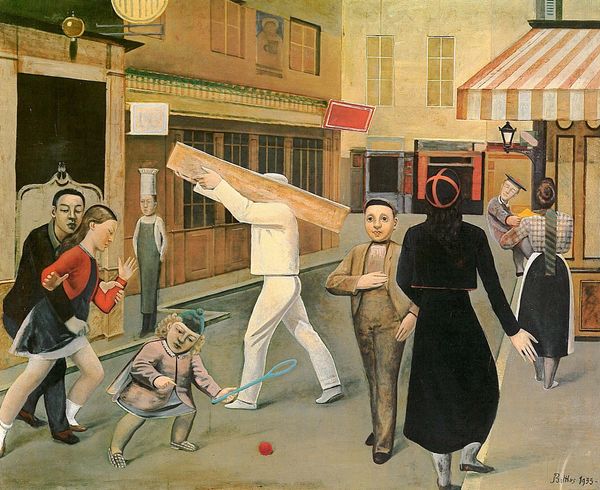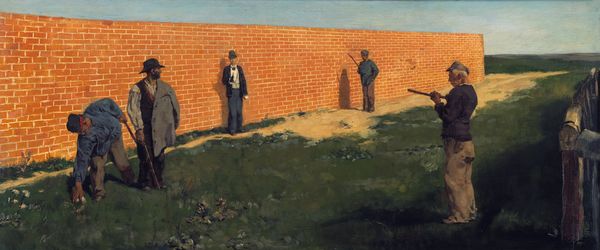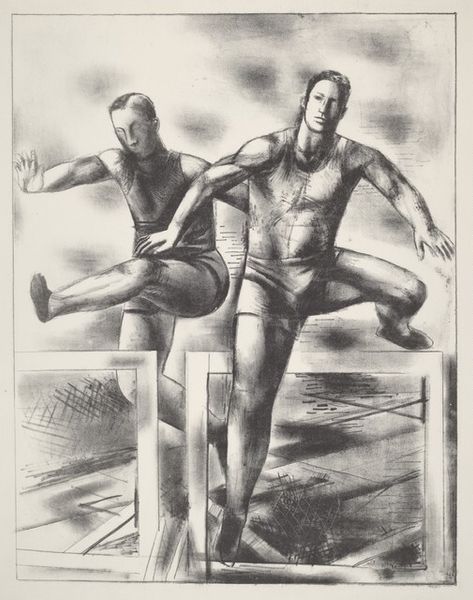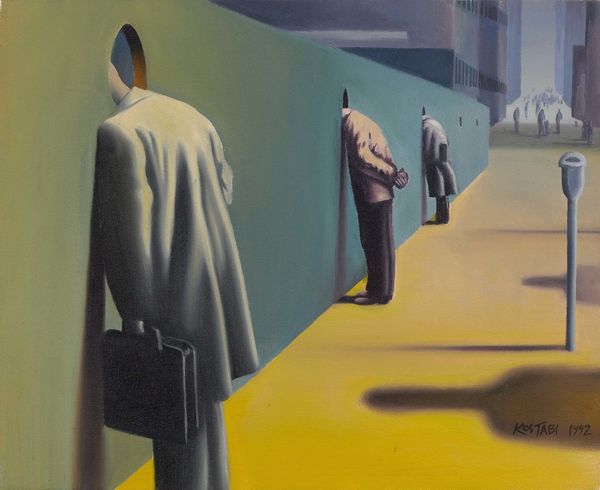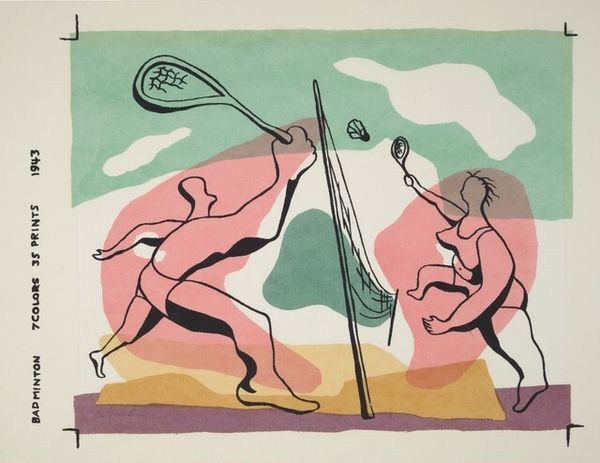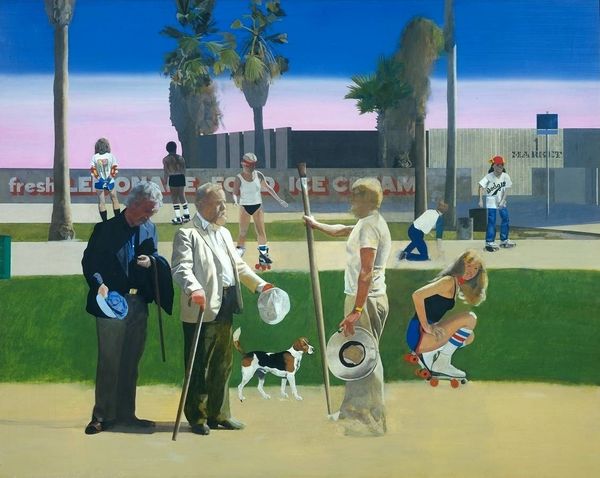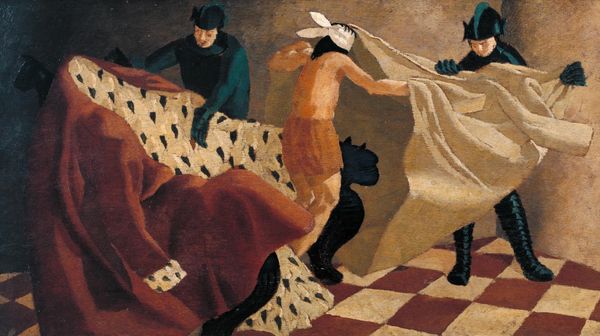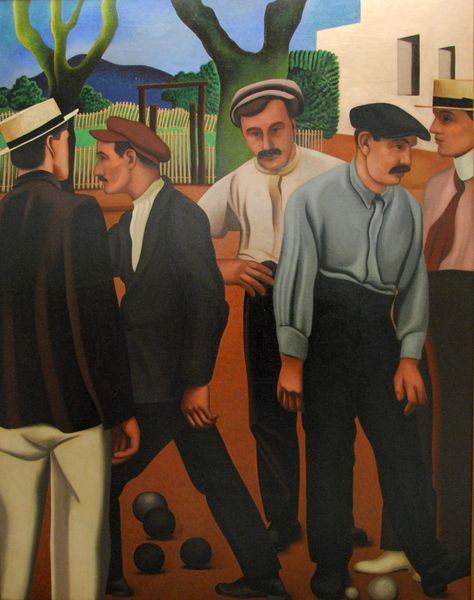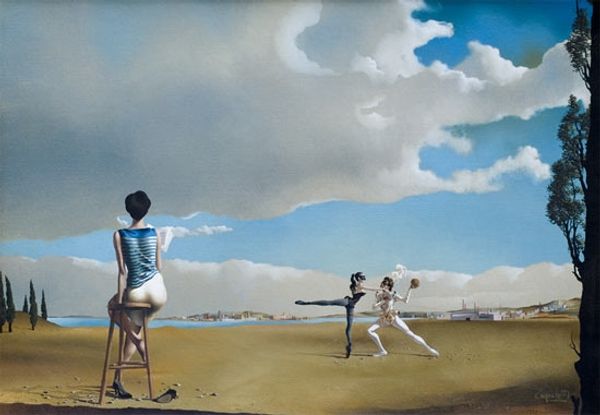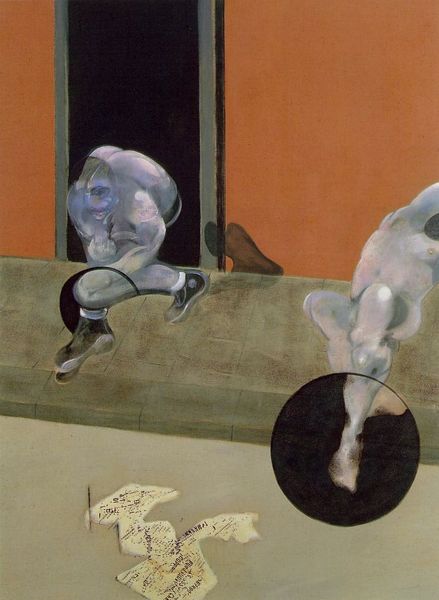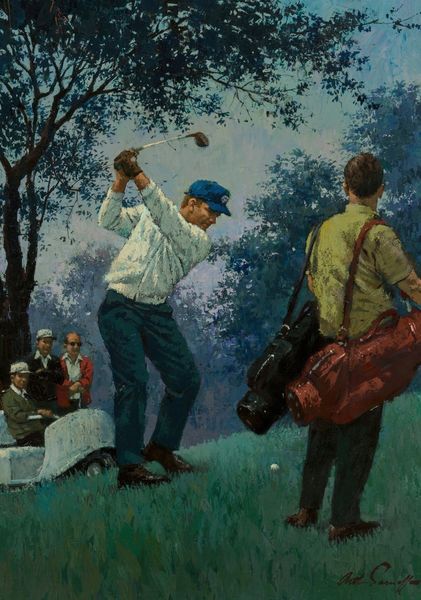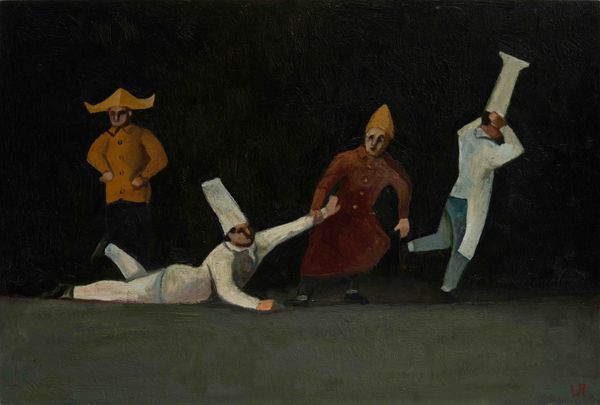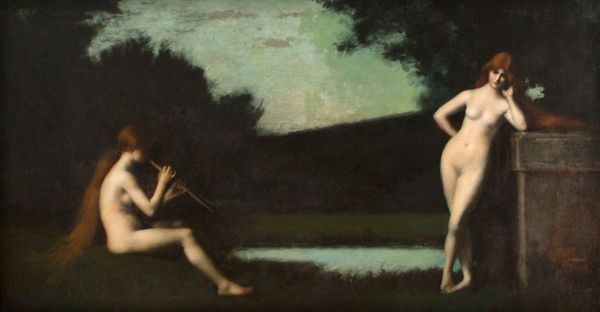
Copyright: Public domain
Editor: This is the right wing of Eric Ravilious' triptych, "Tennis," painted in 1930, and seems to be done primarily in watercolor. The perspective is quite interesting, especially the cracked surface of the court. What strikes you about this piece? Curator: Let's think about Ravilious’s choice of watercolour itself. It was commercially produced, made available to a wider range of people than ever before, transforming artistic production. How does that accessibility shift the perception of ‘high art’? Editor: That’s a good point. I guess I hadn't thought about watercolour in terms of accessibility. It does feel less… precious than oil painting. Does that influence the way we see the subject matter? Curator: Absolutely. The democratization of artistic materials runs parallel to the rise of leisure culture, evident in the tennis scene. Notice how the means of representation—the accessible watercolour— mirrors the scene of leisure it depicts? This interplay implicates both artist and viewer in the system of production and consumption. Editor: So, the painting isn't just *of* leisure; it's *part* of the leisure industry itself, in a way. Curator: Precisely! It becomes another commodity. And consider the stylized figures; are they embracing mass-produced ideals of beauty and activity? Does that uniform crackling on the surface imply fragility? Editor: The cracked surface does lend a kind of decay to the picture. Maybe suggesting even leisure is fleeting. Curator: The artwork offers a tangible intersection of materials, leisure, and mass culture that prompts crucial discussions about labor and commodification within artistic practices. Editor: Thinking about art through the lens of its materials and production has given me a much wider understanding of it!
Comments
No comments
Be the first to comment and join the conversation on the ultimate creative platform.
